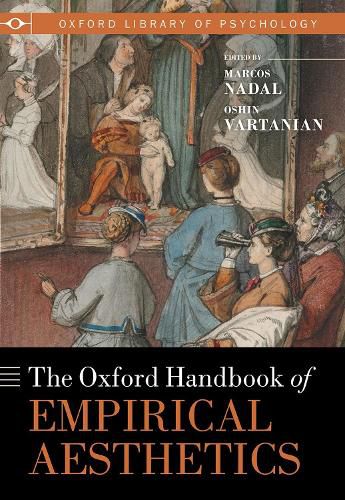Readings Newsletter
Become a Readings Member to make your shopping experience even easier.
Sign in or sign up for free!
You’re not far away from qualifying for FREE standard shipping within Australia
You’ve qualified for FREE standard shipping within Australia
The cart is loading…






Humans have engaged in artistic and aesthetic activities since the appearance of our species. Our ancestors have decorated their bodies, tools, and utensils for over 100,000 years. The expression of meaning using color, line, sound, rhythm, or movement, among other means, constitutes a fundamental aspect of our species’ biological and cultural heritage. Art and aesthetics, therefore, contribute to our species identity and distinguish it from its living and extinct relatives. Science is faced with the challenge of explaining the natural foundations of such a unique trait, and the way cultural processes nurture it into magnificent expressions, historically and ethnically unique. How do the human mind and brain bring about these sorts of behaviors? What psychological and neural processes underlie the appreciation of painting, music, and dance? How does training modulate these processes? Are humans the only species capable of aesthetic appreciation, or are other species endowed with the rudiments of this capacity? Empirical examinations of such questions have a long and rich history in the discipline of psychology, the genesis of which can be traced back to the publication of Gustav Theodor Fechner’s Vorschule der Aesthetik in 1876, making it the second oldest branch in experimental psychology.
The Oxford Handbook of Empirical Aesthetics brings together leading experts in psychology, neuroimaging, art history, and philosophy to answer these questions. It provides the most comprehensive coverage of the domain of empirical aesthetics to date. With sections on visual art, dance, music, and many other art forms and aesthetic phenomena, the breadth of this volume’s scope reflects the richness and variety of topics and methods currently used today by scientists to understand the way our mind and brain endow us with the faculty to produce and appreciate art and aesthetics.
$9.00 standard shipping within Australia
FREE standard shipping within Australia for orders over $100.00
Express & International shipping calculated at checkout
Stock availability can be subject to change without notice. We recommend calling the shop or contacting our online team to check availability of low stock items. Please see our Shopping Online page for more details.
Humans have engaged in artistic and aesthetic activities since the appearance of our species. Our ancestors have decorated their bodies, tools, and utensils for over 100,000 years. The expression of meaning using color, line, sound, rhythm, or movement, among other means, constitutes a fundamental aspect of our species’ biological and cultural heritage. Art and aesthetics, therefore, contribute to our species identity and distinguish it from its living and extinct relatives. Science is faced with the challenge of explaining the natural foundations of such a unique trait, and the way cultural processes nurture it into magnificent expressions, historically and ethnically unique. How do the human mind and brain bring about these sorts of behaviors? What psychological and neural processes underlie the appreciation of painting, music, and dance? How does training modulate these processes? Are humans the only species capable of aesthetic appreciation, or are other species endowed with the rudiments of this capacity? Empirical examinations of such questions have a long and rich history in the discipline of psychology, the genesis of which can be traced back to the publication of Gustav Theodor Fechner’s Vorschule der Aesthetik in 1876, making it the second oldest branch in experimental psychology.
The Oxford Handbook of Empirical Aesthetics brings together leading experts in psychology, neuroimaging, art history, and philosophy to answer these questions. It provides the most comprehensive coverage of the domain of empirical aesthetics to date. With sections on visual art, dance, music, and many other art forms and aesthetic phenomena, the breadth of this volume’s scope reflects the richness and variety of topics and methods currently used today by scientists to understand the way our mind and brain endow us with the faculty to produce and appreciate art and aesthetics.